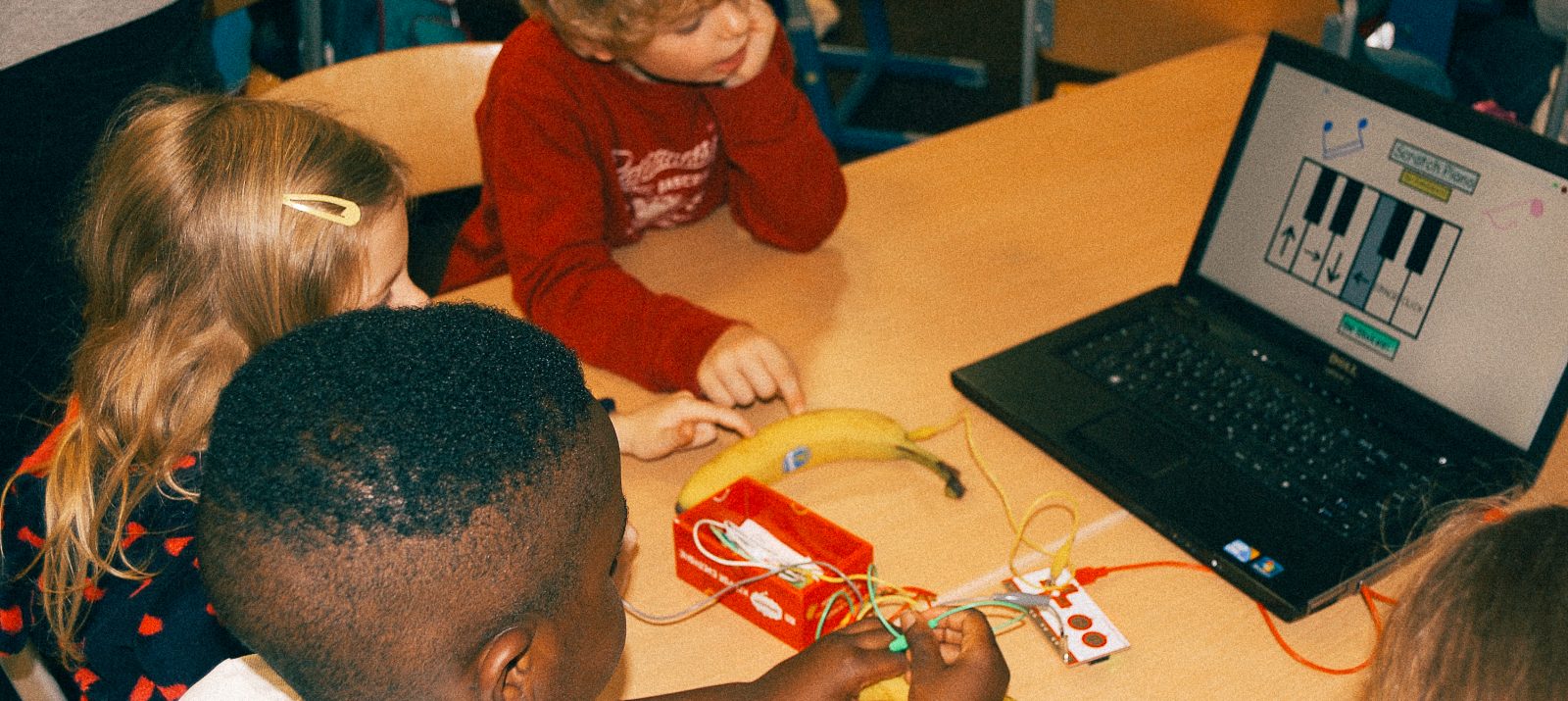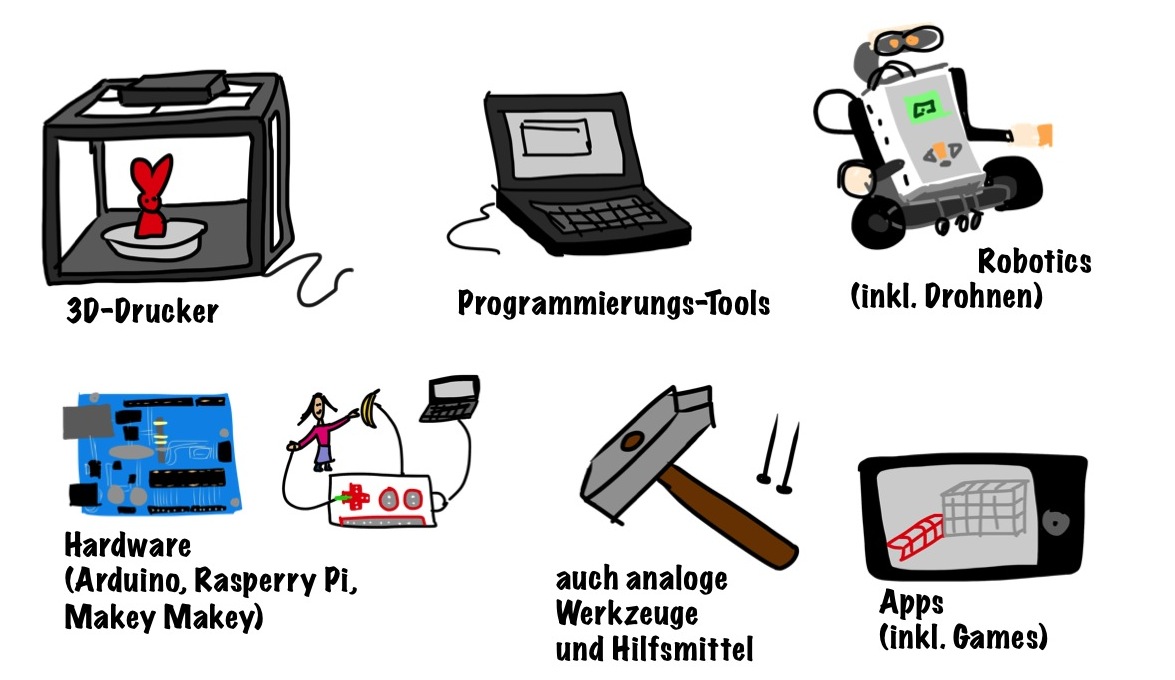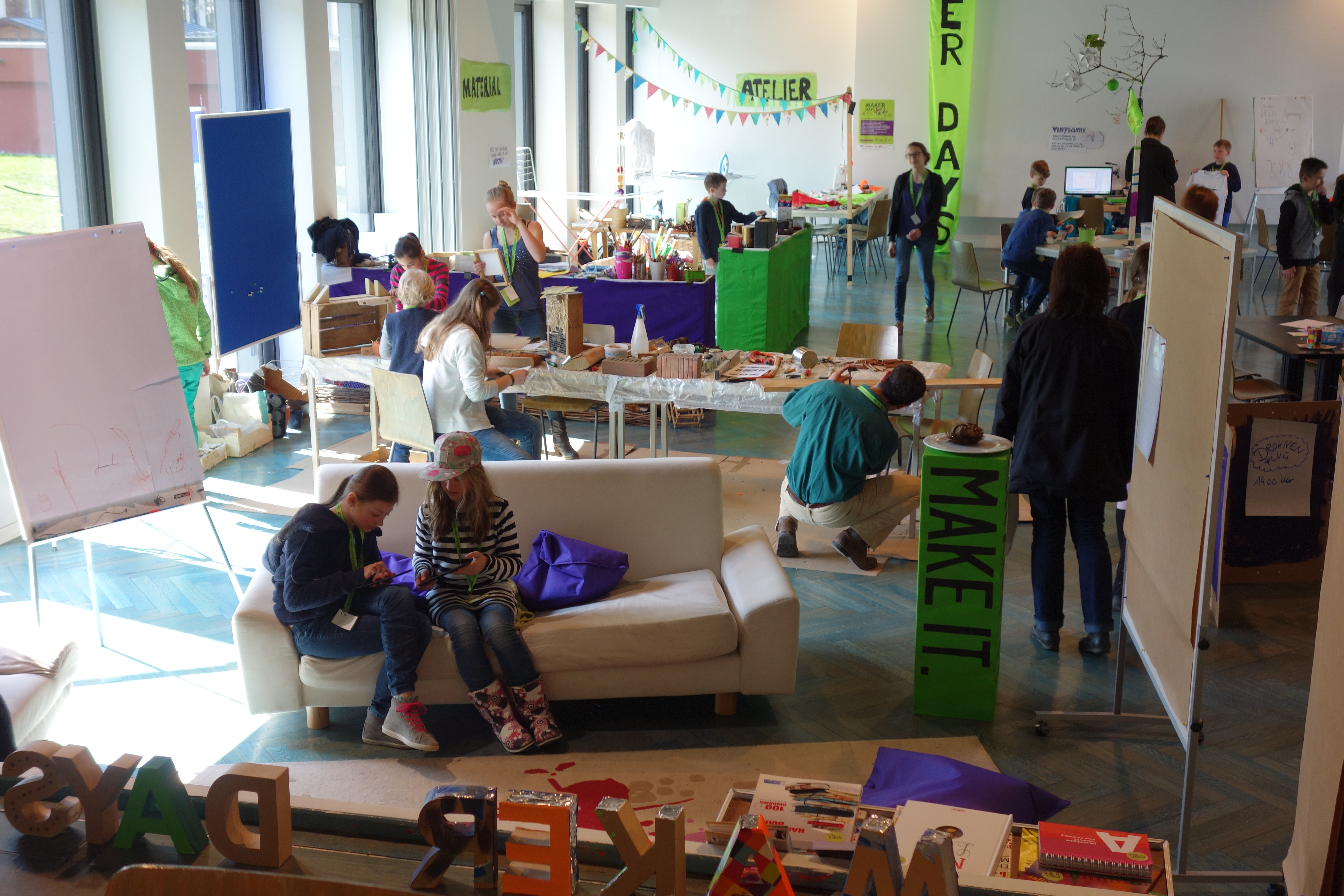
This article is a guest post by Kristin Narr.
Designing, tinkering, crafting and making something: When children can do something themselves, they are quick to get excited. This is precisely the need that so-called “making” is all about.
The term “making” comes from the English to make = to make. Making accordingly refers to doing it yourself with the help of common and often digital tools. Making can be described as creative digital design. The goal of making activities is to create your own (digital) product from a variety of materials.
Making can look very different. Making can involve working with smartphones, LEDs, microcontrollers, sensors, motors or 3D printers. In addition, certain hardware can be the focus of trial and error, such as the Raspberry Pi or a MakeyMakey. However, there is also special software that can be used and tested, such as Scratch. Scratch is a free programming environment for children. Here, children can get to grips with programming, for example by programming animations, games or stories using “building blocks” designed with children in mind.

Photo “Maker tools” by Sandra Schön, CC BY 3.0, https://creativecommons.org/licenses/by/3.0/legalcode
Making is not just about the making itself, rather the focus is on understanding by making something yourself. The children and young people become active themselves. They develop their own ideas, they invent, they look for solutions, they develop their creativity together with others – and learn in the process.
We access things differently, understand and learn in different ways. Ask yourself the question: Do you prefer to read a two-page text on how an electric circuit is built and works, or will you turn on – no, on – faster if you build it yourself and find out how it works?
How a person acquires new knowledge varies greatly. Children in particular often like to discover things by doing them.
Children and young people face “problems” or tasks and find their own creative solution that works for them, by themselves and together.
In addition to promoting various skills in the use of digital media, Making supports the development of creativity and the building of knowledge. Here, the focus is on awakening interest in the natural sciences and mathematics, as well as craft skills and working and learning together with others.
In Making, children and young people should actively (co-)shape their world and thus make it a little better. Sustainability and environmental protection are therefore also a top priority in making. Tinkering is also often done with inexpensive and recyclable materials such as paper cups, small LEDs or plasticine.

Photo “Maker-Days” by Sandra Schön, CC BY 3.0, https://creativecommons.org/licenses/by/3.0/legalcode
Making activities for children and young people are mostly led by adults and take place in many different locations. There are projects at schools or recreational facilities, media competence centers, and v. m. Often, making also takes place in so-called makerspaces or open workshops that are open to everyone and where the appropriate environments as well as materials and large devices are already available. These places often offer extra courses for children and teenagers. All you need to bring along is the joy of DIY, tinkering and trying out digital technology.
A great LED New Year’s card as a small making project including instructions to make and customize, ideally with your kids together, can be found here.
About the author:
Kristin Narr is freelance media educator. Her work focuses on the open, creative, and participatory use of digital media, digital child and youth participation, and learning in digital environments.